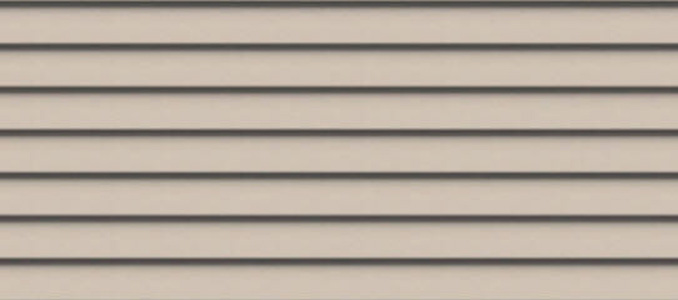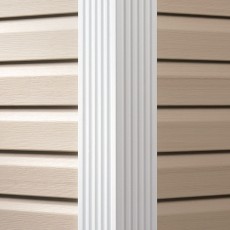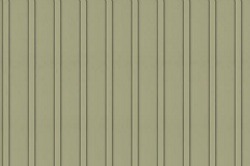- Home
- History of Siding
Short History of Siding
Let's take a little trip back into history. A long time ago, people used to live in Caves. All they had to do is to find a large cave in the side of some mountain and move in. The whole family could live there. If they needed more room, they would just go find a bigger cave to move into.
Eventually, people ventured out into the forest, and the forest was much nicer than the cave. So, they wanted to move out into the forest and live. They began to cut down trees and stack them on top of each other.
They had just invented cabins made from logs or log cabins. If you needed a bigger cabin just cut down more really big trees. Everyone was happy.
Then settlers came to America on ships, hundreds at a time. So, they needed to build many cabins all at once. The settlers needed housing quickly, so they turned to the most common and plentiful building material in the area, trees. They chopped the trees down and made log cabins.
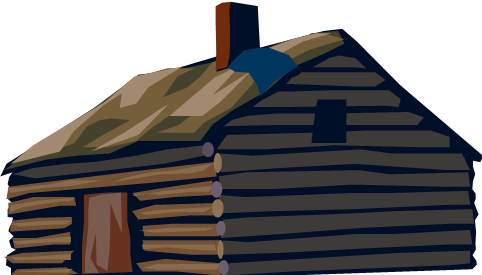
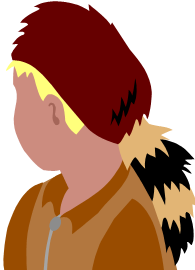
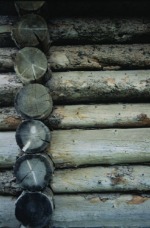
Log cabins
Log cabins were strong, weather tight, and easy to build because of all the abundant trees that grew in the area. All you needed were some strong men with a few axes.
The settlers needed to clear the land so they could plant their crops. So, cutting down the trees to make houses also created new ground to plant crops. Two problems solved.
As more and more people came, they needed more and more trees. The first log homes used large trees cut down and stacked on top of each other. Crude but it worked very well.
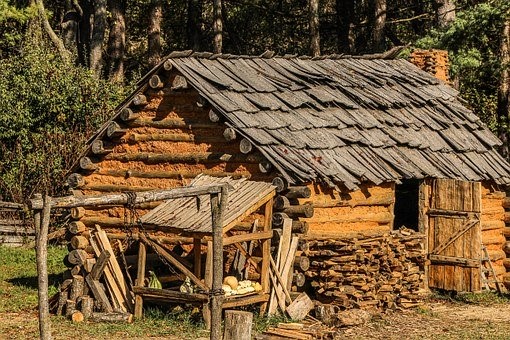
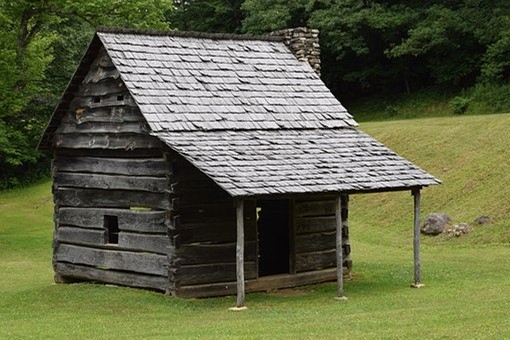
As the settlers used more and more of the trees, they decided that they could chop down a tree and then saw the tree into long planks and get enough planks from just a few trees to build several houses. By sawing trees into long thin planks or boards, they could build twice as many houses from the same number of trees.
This could be the first 'green' movement.
Some of the people coming to America were from England where ship building had been around for centuries. Ship builders were incredibly good at using planks of wood nailed to a frame to make strong ships.
So, they adapted the ship building techniques to home building. They used boards to make the house frames and then nailed long planks of wood to the frames. It looked like the side of the old wooden sailing ships. This became known as the ship-lap technique. And the nailing of long horizontal boards on houses became known as 'ship lap' siding or just 'lap' siding.
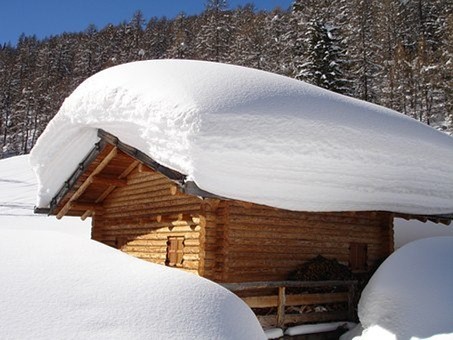
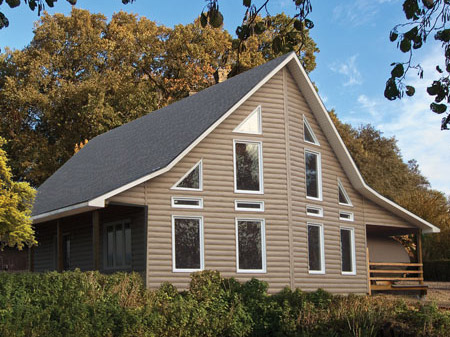 Modern Vinyl Log Cabin
Modern Vinyl Log CabinMore of the story.....
Since most houses were one story, people nailed the long smooth planks horizontally onto the home from end to end. It was quite an improvement from the first log cabins and was not as wasteful.
This has become the most popular type of exterior cladding for hundreds of years. Today we call it Clapboard Siding.
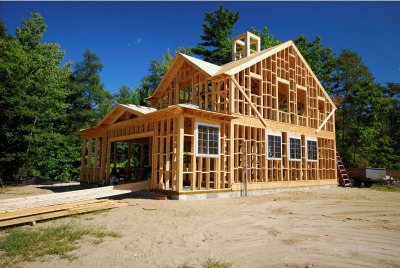

Click here to see more information on Lap Siding or Clapboard style of siding.
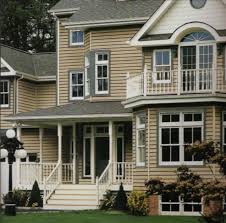 Lap Siding or Clapboard Siding
Lap Siding or Clapboard SidingAs people built more and more houses, they wanted to make their homes look different from all the other houses in their neighborhoods. They wanted to do something extra or “special” to their homes. Especially the people who had a little more money than their neighbors.
These people hired exceptionally good carpenters to hand carve notches along the top and/or bottom edges of the long wooden boards or planks. This notch that runs across the top of the plank is called “Dutch Lap” style siding.
If they carved the notch on the bottom edge of the long planks, they called that style “Beaded Siding”
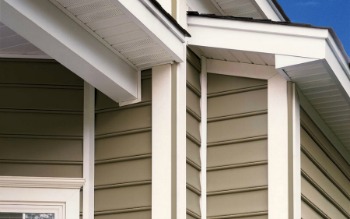 Beaded Siding
notch or grove is on the bottom edge of the plank.
Beaded Siding
notch or grove is on the bottom edge of the plank.To learn more about Dutch Lap Siding please click here.
To learn more about Beaded Siding click Here.
More of the History of Siding
As the people began to saw tree logs into long thin panels to use as siding and nail it horizontally across the house, it was not long before they wanted to do something even more different. So, they nailed long wooden planks up and down, vertically around their house. Anything to be different…
They would cut large planks of wood and nail them vertically from top to bottom or vertically. Since each of the long planks were not exactly the same width, after they nailed them onto the house, they would nail a small wooden batten where the two planks came together to cover the cracks up to make the house more weather tight.
Hence the term Board and Batten Siding.
To see more information on Board and Batten style of siding, especially vinyl siding
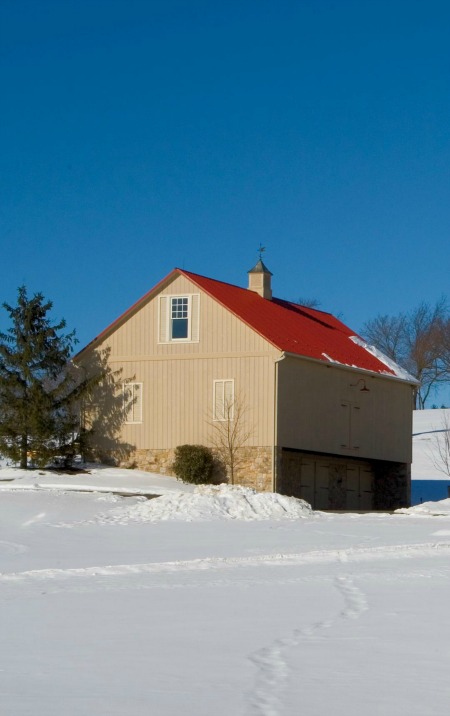 Barn Siding
Board and Batten Siding is sometimes called Barn siding because it has been used on barns for hundreds of years.
Barn Siding
Board and Batten Siding is sometimes called Barn siding because it has been used on barns for hundreds of years.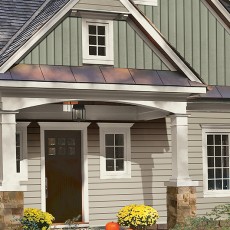 Board and Batten Siding
Vertical Siding sometimes used as an accent on houses.
Board and Batten Siding
Vertical Siding sometimes used as an accent on houses.About 50 years ago, wood siding had become very expensive to buy, and required a lot of maintenance such as painting, and repairing water and insect damage.
Then in the early 1960's, vinyl came out and quickly replaced wooden siding.
There was such a demand that the manufacturers recreated the many different types of wood siding such as clapboard, Dutch-Lap and yes even cedar.
Today, vinyl siding looks just like wooden siding and you can get it in a wide range of different types, colors, and styles. Choices that are almost unlimited in colors and textures.
Vinyl siding looks like wood:
Vinyl siding can be made to look like cedar, pine, or many other types of wood. It can be made in most any color, and is relatively maintenance free, insect repellent, water resistant, will not rot, fade, or splinter. It is adaptable to most any climate and is one of the best methods of weather proofing you home.
And it costs a fraction of what real cedar, and cedar logs would cost. Much easier to install, and you avoid all the staining, and painting, sealing, and yearly maintenance required for real wood siding.
The time-tested rustic look of log siding is now also available in vinyl log siding. Now you can get the rustic look of log siding or cedar shake siding without the expense and maintenance of real wood.
As people wanted more and more choices, they started to install the wooden planks both vertically and horizontally. And began to add more and more profiles. The profile is the way the front of the siding boards look on the house.
Because wood was plentiful is became the most common exterior siding. It had been used for hundreds of years all over the world.
Cedar siding has been the wood siding of choice for hundreds of years because of its natural beauty and low maintenance.
It has a high resistance to insects, decay, weather, and is superior to all other woods when it comes to warping.
It has outstanding insulating qualities and is one of the best thermal insulators of any available woods.
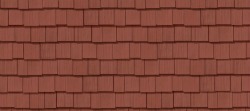 Vinyl Cedar Shake Siding
Vinyl Cedar Shake SidingTo see more about Vinyl Cedar Shake Siding click here
To see more information on today's vinyl sidings, click here Vinyl Siding Institute of America
As more and more people began to cut down the trees, they figured that if they saw long wooden planks out of the logs, they could get a lot more wood out of the logs.
So, they cut down the trees and made logs and then cut the logs into long wooden planks to cover their houses and barns. It also helped protect the houses from the harsh winter winds.
The early colonist either nailed the wooden boards horizontal, called lap board or clapboard, or they nailed the boards vertically.
Vertical siding is called Board and Batten Siding. They would nail two boards up on the house and nail a small thin strip of wood, a 'batten', between the boards to make it weather tight. Hence the term 'board and batten' siding.
People who liked the rustic look of Cedar cut the Cedar into small shakes and used them to cover their houses.
Houses were warmer and they cut down fewer trees. A great solution to the housing problem!
Today's vinyl siding looks just like real wood, doesn't rot, termites won't eat it, requires very little maintenance and up-keep, doesn't need to be painted like real wood.
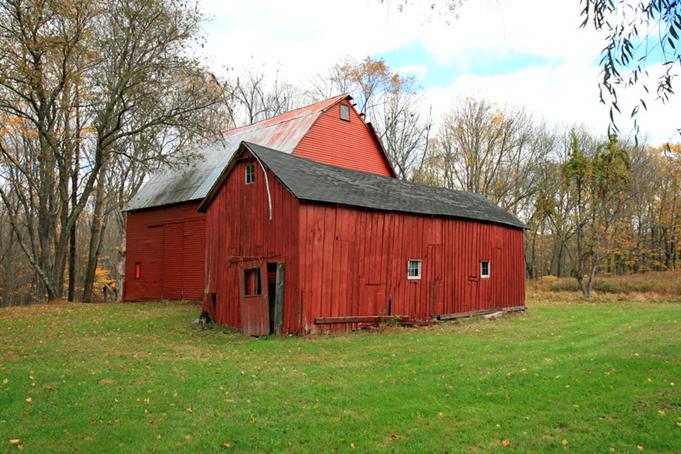
One of the reasons people love vinyl siding is that it is so easy to work with.
You can easily install vinyl siding over most existing home exteriors such as brick, stucco, and wood. Usually with just a little prep-work to your house.
You may need to remove the existing exterior in some cases. This will result in an additional cost to you. You should ask your contractor to explain if he suggests removing it.
Once you choose the way you want your house to look, picking the right vinyl siding is as easy as going shopping for the perfect color, texture, and style that you like.
Today's vinyl siding is made to look just like the old colonial plank siding used so many hundreds of years ago. A classic look to modern homes. At a fraction of the cost of real wood. And yet it is hard to tell the difference between two by looking.
Even in colonial times only three basic siding types were used. The siding either runs horizontally or vertically. And then the Cedar Shake Sidings.
Each of the three distinct types can be used and generally are used together to create that special look. Mixing and matching types, colors, and textures for a unique and personal style.
Go back to Home Page click here.
To see more information on Types of Vinyl Siding, click here.
How to buy vinyl siding...where to begin...click here
